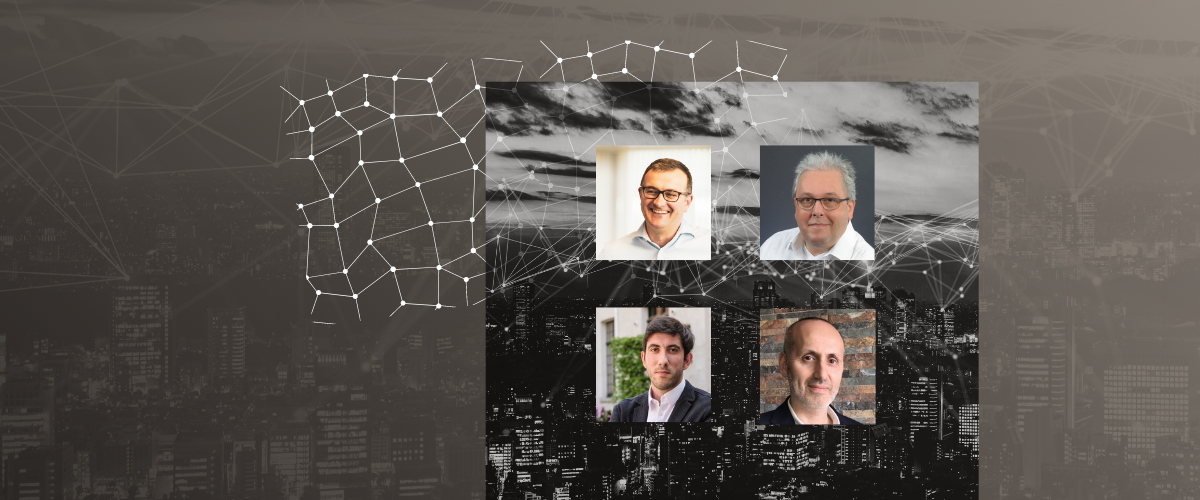
At the first virtual edition of CIONEXT on February 14th this year, we asked participants how much time in executive committee meetings is spent discussing digital topics. 66% think digital strategy should be in focus for more than 40% of the meeting time. But 72% say at their organisations it is less than that. What do finalists of European Digital Leader Of The Year 2020 do to improve this dynamic?

Surprisingly, more time spent discussing digital topics might not mean better digital savviness.
Günther Ghijsels, CIO/CDO of Randstad Group Belgium, said that his executive committee spends only 25% of time talking about digital initiatives, but it doesn’t have much to do with lack of digital savviness. Rather, it’s because technology is a means to deliver business objectives and not an objective in itself. Günther says that he’s not the only digital leader at the executive committee - all the members are becoming more digitally minded, because that’s in the company’s DNA and digital savviness is no longer something optional or assigned to single executives. Günther brings to the table his knowledge about what’s possible in terms of technology to help deliver business strategy.
The role of a CIO, in the ECOTY finalists’ experience, is to be part of developing that strategy, with the knowledge about the changing reality of consumers and human behavior, by advising what new goals can be achieved better by utilizing new technology.
The executive board wants to know about business benefits, not about features of products. “I use customers and suppliers and their expectations to “sell” my digital projects to the board,” said Nino Messaoud, CDO of Barry-Wehmiller.
Although many executive committees might be tempted to go the route of “fashion IT” or “fondue sets” mentioned by Nils Fonstad in CIONEXT opening talk - to focus on building a portfolio of flashy technologies or seeking innovation by following digital trends, Günther Ghijsels points out that digital transformation should change the DNA of a company, affect its core philosophy. It should not be just an added feature. Adding on new technologies regardless of business needs will only result in unnecessary technological debt a few years down the line and increase the maintenance cost of the IT environment.
As Miguel Teixeira, Digital Transformation Officer Europe 2 at Groupe Renault, said: “Digital is one of the pillars of our business strategy, not an objective.” The strategy must follow the evolving needs and expectations of people and the digital markets. Miguel added: “We need to bring digital literacy to the strategic decisions, in the form of our understanding how the world is evolving.” As Gunther Ghijsels said: “Applying technology is the easy part.”
As pointed out by the winner of European B2B Digital Leader Of the Year 2020 Rui Pedro Silva, Director of Technology Strategy at Maersk, “What drives a CEO is not the same thing as what drives employees. Defining the digital strategy in a presentation and getting it approved by the board is just the beginning. You have to also prepare and enact the strategy for convincing employees and partners to join the change and work towards common goals.”
Nino Messaoud added: “You have to talk to the people who will have to live with the day-to-day reality of your strategy. People will not support the change unless it’s beneficial for them”
As B2B companies, Maersk, Renault, BW Papersystems and Randstad have the added challenge of knowing not just their customers, but also their respective customers. This leads to complexity that doesn’t always result in a simple list of goals.
“I am not driving the digital transformation of Maersk. I’m doing it for every single customer of ours,” said Rui Pedro Silva.
One of the trends that we are noticing with every year of the ECOTY selection process, is that this complexity can only be addressed by strengthening the ecosystem mindset and often sitting down at one table with clients, their customers, suppliers, other partners and sometimes even competitors. The growing complexity of the world redefines relations between market players and fosters development of unexpected business models. The philosophy of “build it and they will come” died along with companies that are “too big to fail,” as no company has a market position that can’t be disrupted by a more agile competitor.
The most visible element of digital transformation that we’re seeing on the management layer, a practice that emerged from the need to meet the customers’ needs, verify fast-changing assumptions and stay innovative - is transition into agile practices. To meet customers’ needs, we need to get them closely involved in the development process and continuously use that feedback to reiterate product design. To be innovative, companies need to leave a little room for experimentation, and working in a system with small iterations and frequent feedback, is the only way to allow constant learning and possibly small failures instead of massive disasters.
“Digital transformation is not implemented by setting a high-level vision. It is a whole journey of change management - complex and different for every company, there are no simple rules that fit in a presentation. If it was simple, digitization wouldn’t fail 60-70% of the time,” summarized Rui Pedro Silva.
Analyzing these unique change processes is why we started Leadership Deep Dive - a series of in-depth conversations with European Digital Leader Of The Year finalists and the most respected digital leaders in Europe. The only common thread of these conversations (30 and counting!) is that there is no common thread, or no good practice that always works for every company. But it’s only from ambitious experiments and observations made by leaders of digital change that we can learn and plan our own transformation journey.
Find out how our Finalists are changing their companies for the evolving digital world:
These Stories on CIONET International
No Comments Yet
Let us know what you think